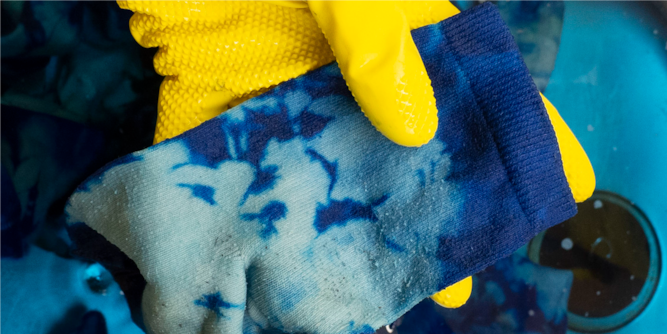Lemon paintings and potato spirals: tell me you were at the creative fair without telling me
Background information
by Stefanie Lechthaler

Watering can, garden hose or drip irrigation: they all bring water to the plants, but where are the differences and how much effort is worthwhile for your garden, your balcony or your apartment?
Dry spells can quickly take their toll on your lawn, balcony and houseplants. The reason: depending on temperature, soil conditions and humidity, a square metre of lawn, for example, loses up to four litres of water per day through evaporation. Here you can find manual and automatic watering products from brands such as Gardena, Kärcher, Eve, Xiaomi, TFA, Blumat or Alba.
One thing in advance: You can make mistakes even with the ultimate watering system. Because you still have to determine the watering time and water requirements yourself. For the former, either early in the morning or in the evening after sunset makes sense. This way you keep evaporation low and the plant roots actually get most of it. Morning is even better than evening, because on the one hand it is cooler and on the other hand no slugs are attracted overnight. With automatic watering, it is very helpful that you can set the desired time with a timer. What you water best with depends on the size of your garden, the amount of time you want to spend and whether you are often on holiday.
Watering can
This is still the most common watering tool and comes in all shapes, colours and sizes. It takes a bit of man or woman power, but in return it can't be beat for simplicity. For small balconies and indoor planters, it's still your item of choice if you don't spend too many long hours at a stretch. If you don't want to carry and constantly refill the watering can, a rain barrel pump is a good choice.
Garden hose
The hose version can be found in many gardens, as it is also necessary for automatic watering. What's a bit problematic with the commercial hose attachment, i.e. by hand with a sprayer on it, is the untargeted watering. If you don't slip under your bushes, you quickly run the risk of watering the leaves instead of the roots. But here too, a solution is at hand in the form of a watering wand. To put it banally, it extends your arm and lets you get down to the ground without contortions. The foliage stays dry and fungal diseases are prevented.
Drip irrigation
Drop by drop, your potted plants are kept alive. Through small holes, usually in a hose or pipe, or drip valves, a small amount of water is constantly directed to the roots of your plants. This makes the system extremely water-saving and is therefore often used in agriculture in warm regions. But also you as a hobby gardener can use the system. You can install it in the garden or on the balcony, in beds, in pots or on an overgrown wall. You should only refrain from laying it on the lawn, there are more effective systems.
Lawn sprinkler
In addition to the square sprinkler, which is still the most common, there are area sprinklers, circle sprinklers, spray sprinklers and pop-up sprinklers. The square sprinkler, such as the Gardena Aquazoom, is logically suited for square lawns, the spray sprinkler for small areas and circle sprinklers can be recessed into the ground and are therefore visually inconspicuous. Area sprinklers can be individually adjusted and are therefore suitable for all garden sizes and even sloping areas.
Irrigation automation
Once installed, you can sit back and relax. You may have to push a button once in a while, but it should be doable. The little computers will control your gardening tools all by themselves, just the way you want them. You can decide when, how often and how long you want your sprinkler or drip irrigation to run. For frequent travelers, workaholics, or those with busy schedules, it's a good idea to purchase such a system.
Background information
by Stefanie Lechthaler

Background information
by Stefanie Lechthaler

Best selling

Opinion
by Darina Schweizer
